Recent Articles
Popular Makes
Body Types
2017 Lincoln Continental Road Test and Review
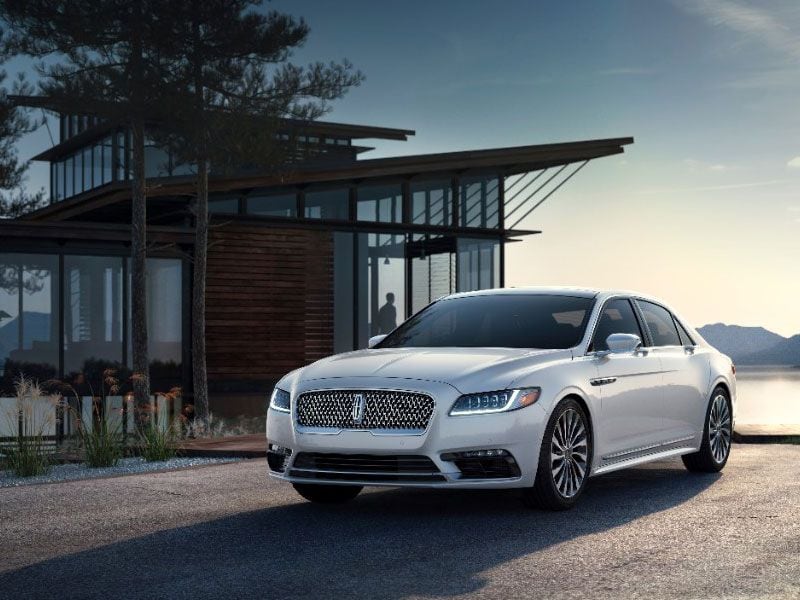
2017 Lincoln Continental exterior front angle parked ・ Photo by Lincoln
I’m writing this review in the first person singular, something not often done here at Autobytel, because my opinion of the new 2017 Lincoln Continental may put me in the minority: I really like it. It’s a flawed car in many ways, full of quirks and carrying a high price tag, and yet it’s got a vibe that gets my foot a-tappin’. Am I off my rocker, or will you too like the new Connie? Let’s drive it and find out.
Glory Days
Lincoln has a long history of trying to recapture the glory of its past. For a while, the big Navigator SUV had an interior that captured the look and feel of the 1970s, when Lincolns featured expansive, over-stuffed interiors with minimal controls and instrumentation that emphasized the cars’ sheer size. Unfortunately, sheer size was all those Lincolns had going for them, what with their hard-to-start emissions-choked engines and waterbed-like suspensions. The experiment in modern-day retro failed, and Lincoln soon redesigned the Navigator to look more modern. Lincoln is trying again with the Continental, which reminds me of a sci-fi movie what with its mix of ultra-modern technology and nostalgic interior styling. And by Jove, I think they’ve done it—the new Continental is a thoroughly modern car that has a deliciously nostalgic feel.

Photo by Lincoln
Bold Mission
Let’s begin at the beginning: The Continental was originally introduced in 1961, a trimmer, less ornate successor to the brand’s over-chromed behemoths of the late 1950s. The original Continental (see it in this video) was a groundbreaker, a car that singlehandedly trashed the chrome-and-fin excess of 1950s luxury cars and ushered in a design ethic that American cars would carry well into the 1980s. In more recent years, the Continental played the role of second-fiddle sedan to the flagship Town Car. In the early 2000s it morphed into the MKS, which, like the Continental before it, was little more than a gussied-up Taurus. Now that the Town Car has been retired, Lincoln is dusting off the Continental nameplate for 2017 and giving the car a new mission: It is Lincoln’s flagship sedan, a car intended to be as impressive today as the original was in 1961.
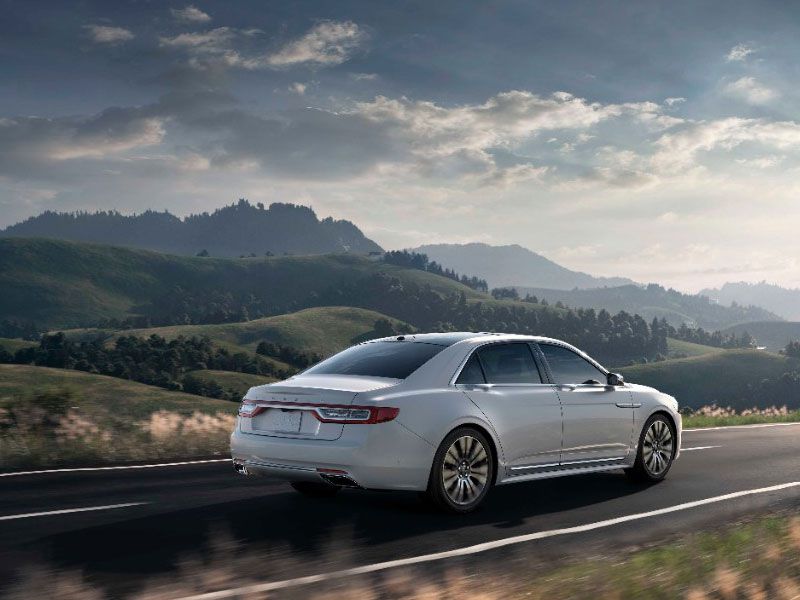
Photo by Lincoln
Strange Styling Outside...
How can I best explain the new Continental’s exterior styling? Like the ’61, it’s a head-turner, but perhaps not for the same reasons. At first glance, this is a strange-looking car: The overall shape is vaguely reminiscent of Rolls-Royce and Bentley sedans, and the grille couldn’t be more Jaguar-like if it tried. (It’s a shame that Lincoln so quickly gave up on the handsome “waterfall” grille it has been fitting to its cars for the last few years.) The taillights certainly are distinct, and perhaps my favorite element; less so are the giant chrome door handles that stand out from the body sides like benign tumors. Taken individually, the details are derivative and awkward—and yet, taken as a whole, the design does work. It’s unusual, yes, but it’s cohesive and distinctive: At one glance, you know instantly that you are looking at the new Lincoln Continental.
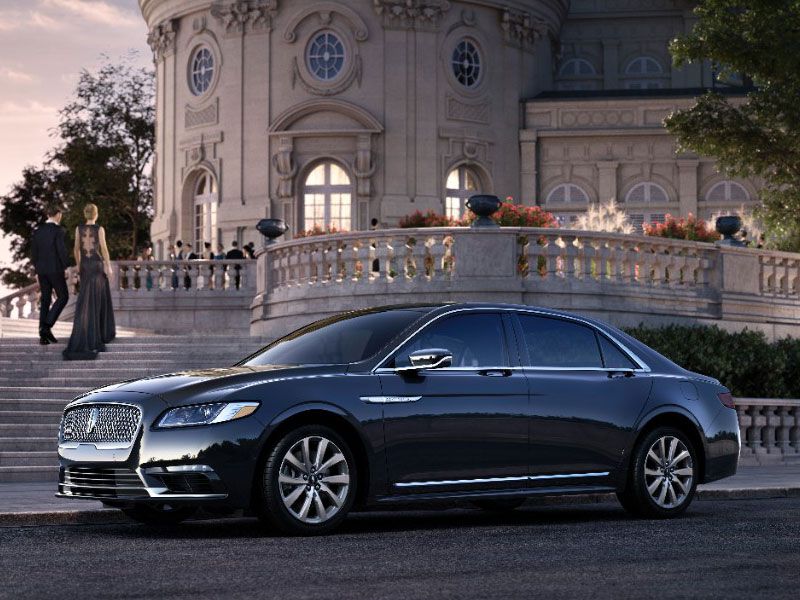
Photo by Lincoln
...But Lovely Inside
Exterior analysis finished, I squeezed the strange-looking door handle, pulled open the vault-like door, and settled into—or perhaps I should say melted into—the Continental’s buttery soft driver’s seat. Lincoln had supplied me with a top-of-the-line Black Label edition with the “Chalet Theme” cabin, featuring a two-tone brown-and-beige interior (even the steering wheel gets the two-tone treatment), quilted leather seats, and “silverwood” horizontally grained wood trim. It gave the Continental an interior feel that my colleague Carrie Kim accurately described as “Don Draperesque” (and as a die-hard Mad Men fan, I see that as a compliment). Other interior themes offered on the Black Label version include Thoroughbred (black and saddle-leather brown) and Rhapsody in Blue (dark blue with silver trim instead of wood). Lesser trim levels don’t get the fancy themes, but they do offer snazzy two-tone interiors with grey, beige, or brown leather, along with monotone black. All are tasteful, if not quite as whimsical as the Black Label cars.
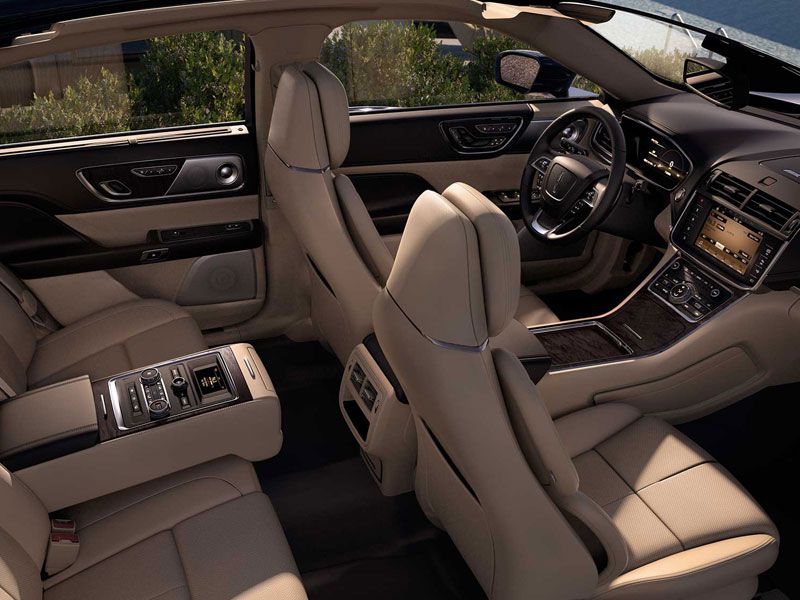
Photo by Lincoln
How Many Ways To Adjust A Seat?
My test car had the optional ($1500!) 30-way power seats, and I’d venture a guess that you could own this car for five years and still never find the perfect seat adjustment. I had the car for just a few days; I’ll bet I spent as much time with my hands on the seat controls as on the steering wheel. (Such is life when you have separate thigh-extenders for each individual thigh.) Not that I’m complaining about the comfort—I was quite serene behind the wheel of the Continental, especially after I quit messing with the seat adjustments and turned on the back-and-bum massagers. Mount a 60-inch television on the hood and a Roku in the dash, and I’d be willing to give up my house and move into the Continental. As you’d expect, back seat passengers fare every bit as well, especially if the Connie in question is equipped with the optional ($4300!!) Rear Seat Package: With it, they can recline, heat, or cool their backsides, and gaze through their own moonroof panel. Even if you should deny your back-seaters such high-class accommodations, they’ll still enjoy big, supportive seats and plenty of legroom.

Photo by Lincoln
A Sensible Shifter...
Lincoln freed up center console space by using a pushbutton selector for the transmission (though why the company chose to mount the buttons right by the center video screen is beyond me; they look like they are part of the navigation system). Let me pause a moment to praise Lincoln’s choice of pushbuttons: Automakers have come up with a variety of strange shifters in an effort to save space; many are confusing and that confusion has turned to tragedy. Pushbuttons are a perfect solution: If you press P, you know the car is in Park. Kudos to Lincoln for making such a logical and safe decision.
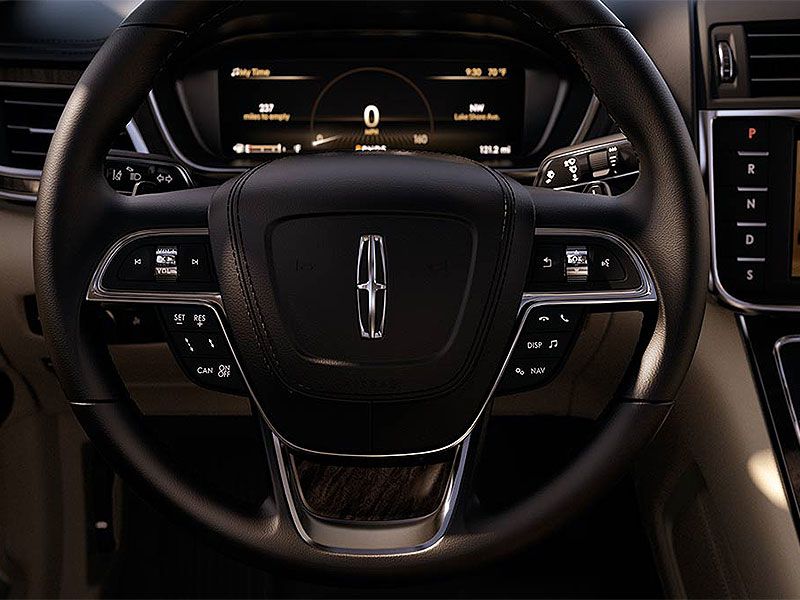
Photo by Lincoln
...But Awkward Ergonomics
Still, the Continental’s ergonomics are a bit strange. Most Ford products (Lincoln is a division of Ford) have a high learning curve, but you would think that with so much space freed up on the center console, the Continental’s designers might spread the controls out a bit. Nope: They’ve crammed the climate and stereo controls into a single, relatively small panel. The abundance of storage space is welcome, but the clunky action of the lids that cover the cubbies and cupholders does nothing to give one a sense of expensive engineering. (Dismiss this complaint if you will, but Lexus won over American buyers with smoothly operating bin covers.) That said, I did like the touchscreen system that controls navigation, stereo, and other secondary functions. Lincoln has taken no end of guff for their MyLincoln Touch infotainment system, and deservedly so; it was tricky to use while parked and too much of a distraction while driving. Lincoln has dropped the old nomenclature and refined the system, and it’s now a lot more pleasant—and safer—to use.
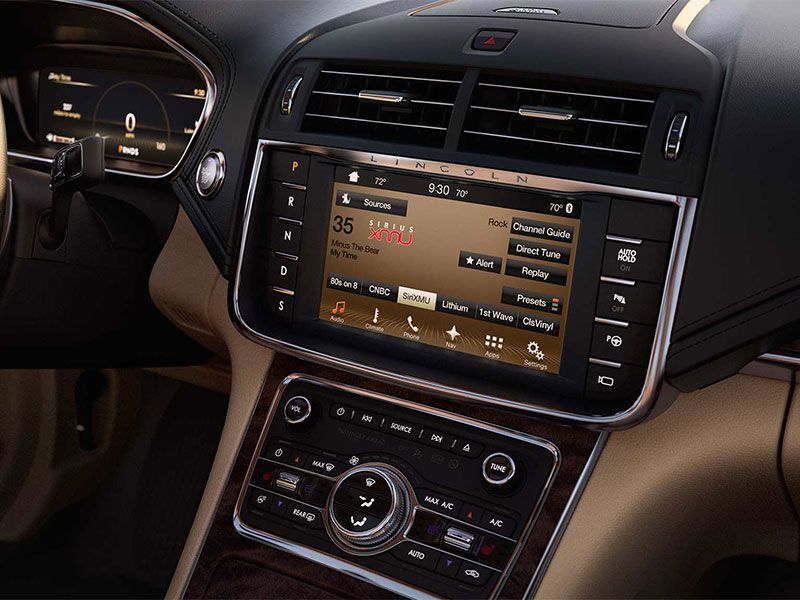
Photo by Lincoln
Quiet, Effortless
So how does the new Continental drive? Lincoln’s themes for the Continental are “quiet luxury” and “effortless power”, and those are indeed the overarching impressions the car gave me. The adjustable suspension delivers reasonable handling in “Sport” mode and pillow-soft riding characteristics in “Comfort” mode. Naturally, the car with which Lincoln supplied me had the top-of-the-line powertrain: A 3.0 liter twin-turbo V6 engine tuned for 400 horsepower and 400 lb.-ft. of torque. And that was the Continental’s crowning glory: Every time I planted the pedal, the Continental ran like a scared rabbit. Effortless, indeed. Of course, my test car had all-wheel drive; Lincoln also offers this powertrain with front-wheel-drive, and I imagine that torque steer is going to be a problem. Lesser powertrains include a 2.7 liter twin-turbo V6 engine that produces 335 horsepower and a non-turbo 3.7 rated at 305 horsepower. The Continental is a heavy car—well over two tons—so those engines will have their work cut out for them.
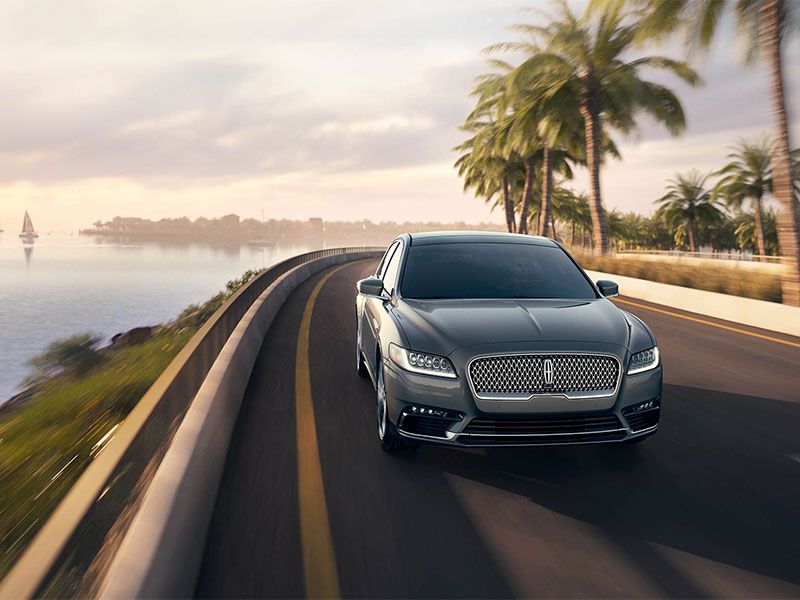
Photo by Lincoln
Sticker Shock
I was enjoying my short sojourn in the Continental until I got around to reading the sticker price: Black Label models start just under $63,000, and my well-equipped tester listed for $78,510, and that wasn’t even with all the options. That’s a lot for a Lincon, especially considering that you can have a very nicely equipped Audi A6 for that kind of money. Lincoln tells us buyers are more likely to go for the Reserve model, but even that version can easily get into the mid-$60s. Entry-level Continentals start at $45,560, but those models are likely to be more popular with car services than retail buyers.
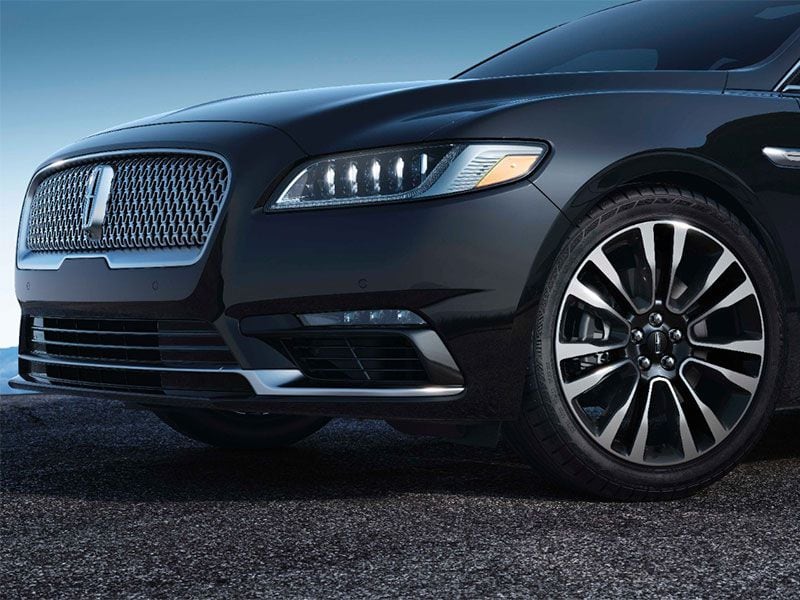
Photo by Lincoln
Bottom Line: It's Hard (For Me) Not To Like
I’ve outlined a lot of reasons not to like the Continental: Strange styling, weird ergonomics, and high prices. And yet I find it impossible not to like this car, mostly because it’s something truly different—a car that really does blend nostalgia and modern technology, albeit in a slightly strange way. Were I in the market for a car like this, I’d be tempted by the Audi A6, as mentioned above, and I would also look at Cadillac’s CT6, which is a more athletic car, if not nearly as opulent. But I might well come back to the Continental: It’s quiet, comfortable, and unlike anything else on the road. Others might disagree—in fact, I imagine many will—but I rather like this new Continental.
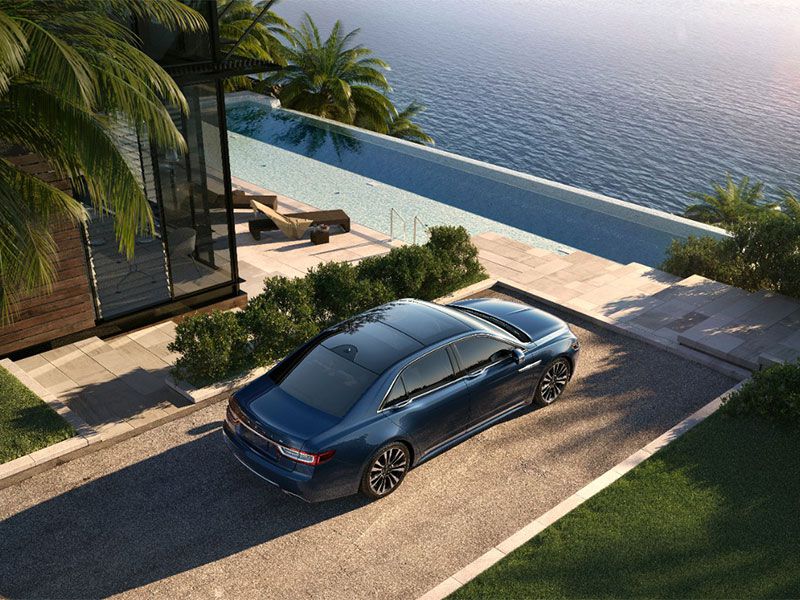
Photo by Lincoln